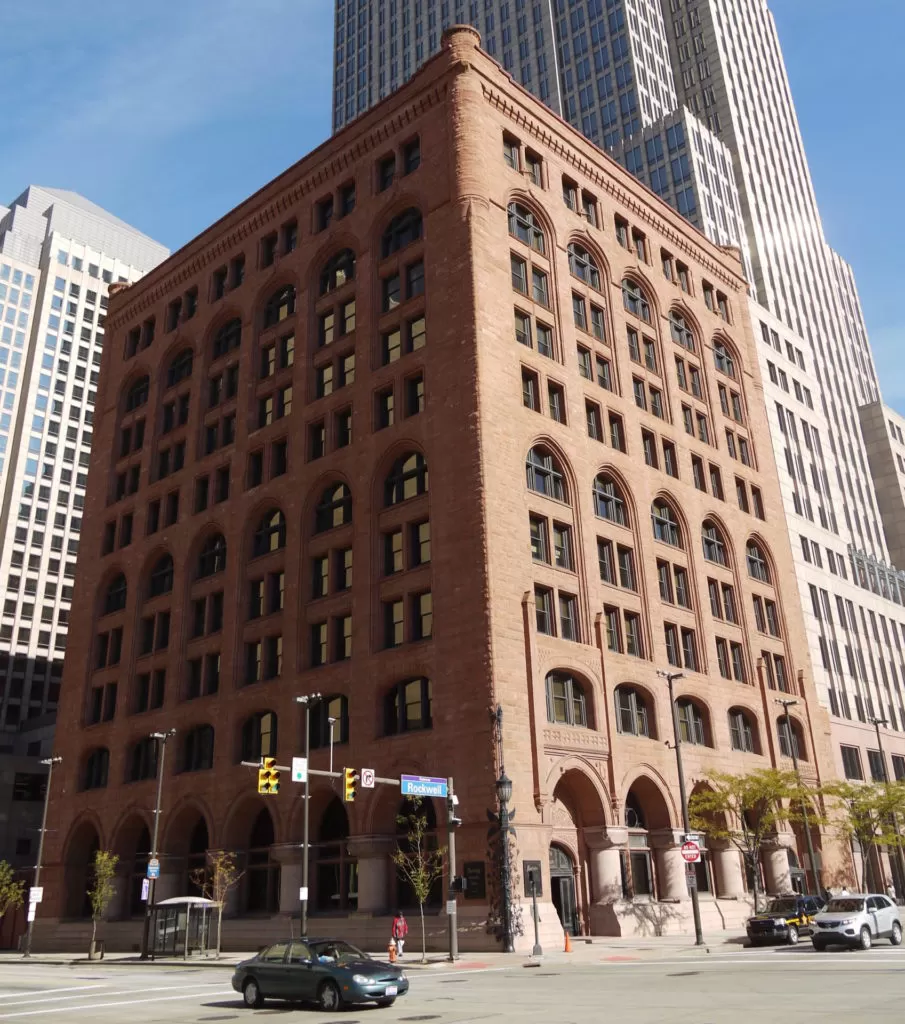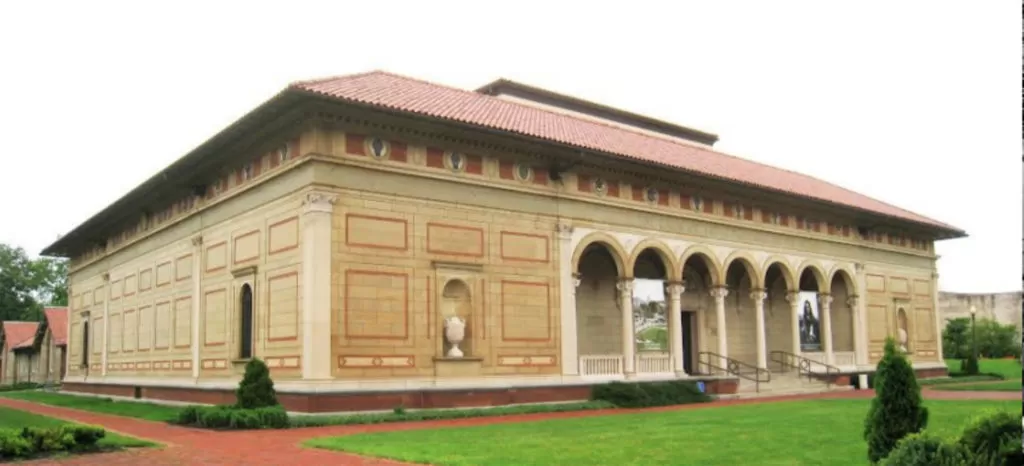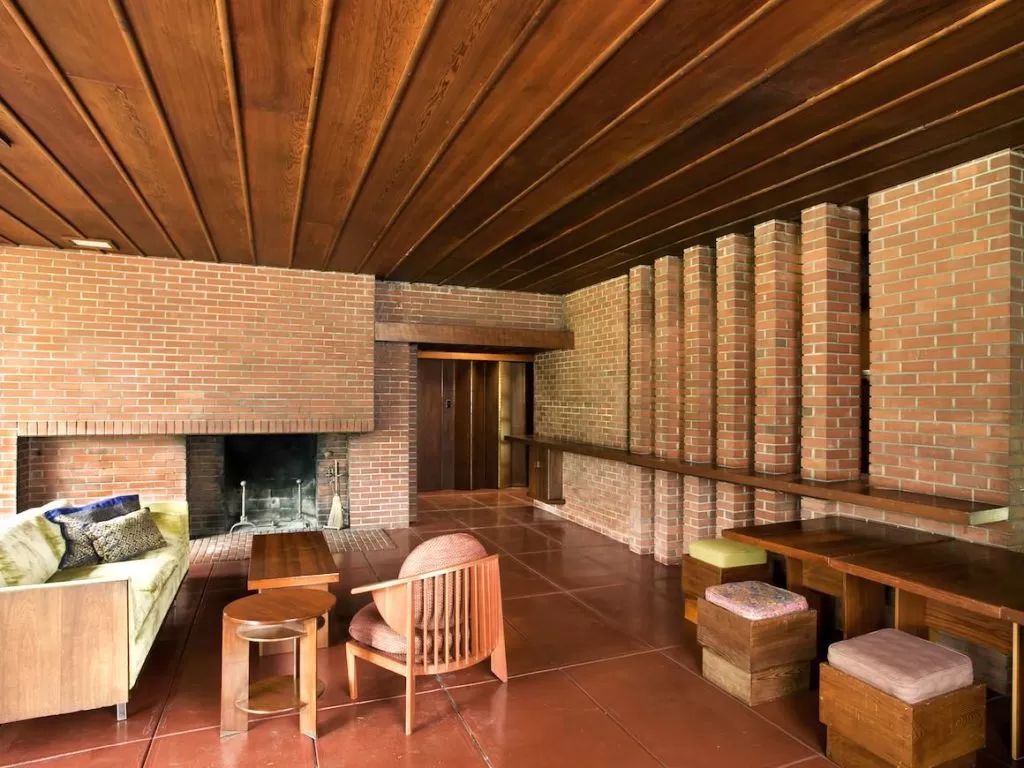Architectural Gems of the Midwest: Cleveland Edition
by Kate Nixon
The Buckeye state — home to Rookwood Pottery, Cowan Pottery, the Cincinnati Union Terminal and Dard Hunter’s house and archives among other notable names — contains a wide array of architectural styles from Arts and Crafts to Art Deco to Greek Revival and many others. While the state has long been visible for its legacy in developing American art pottery firms in the early 20th century, tourists can easily see that some cities like Cleveland have a history in their streets. Ohio’s tourism organizations are shining the spotlight on a number of important buildings as their exteriors and interiors are prime candidates for architectural study. Much of the grand architecture in Ohio was made possible from architects recruited from out of state and as you’ll read below, a few examples in Cleveland were made from professionals brought in from Chicago. The influence of the Arts and Crafts movement can even be seen in the examples built by the expat architects who lived in American cities. The examples below are just a few of the many buildings in Cleveland known to catch the eyes of tourists and locals alike.
Burnham & Root’s 1889 Society for Savings Building

The Society of Savings building located in Cleveland, Ohio designed by Burnham & Root. Photo: Eli Pousson
The tallest building in Cleveland until 1896 and locally dubbed “Ohio’s Skyscraper,” this high-rise ten-story building built in 1887 hides an impressive and colorful interior, complete with Walter Crane murals and the interiors and leaded glass ceiling designed by William Pretyman. The building was created to house the largest bank in Cleveland on the north corner of the city’s Public Square and the top floors would be rented out as office space; John Welborn Root of the Chicago architecture firm Burnham & Root was recruited to build the red sandstone building. The exterior of the building has elements of the Gothic-style and Medieval look in the many arches seen outside. An ornate street light on the corner of the building rounds out the historically preserved building.
However, the impressive pull to locals and tourists is the colorful interior with english painter Walter Crane’s murals depicting the theme of “The Tale of the Goose That Laid the Golden Eggs.” Crane himself had collaborated with William Morris and was a follower of John Ruskin; The beautiful walls and the leaded glass ceiling are the creations of William Pretyman, english-born and Chicago designer with a strong dedication to the British Arts and Crafts Movement. Pretyman would be forever known as Root’s “Color man,” collaborating with John Root on many projects.
Currently, the building is attached to the Key Tower and houses the local Key Bank branch; thankfully the richness of the interior has been preserved.

William H. Prettyman designer, Ceiling in the Interior of Burnham & Root’s 1889 Society for Savings, 1889, Cleveland, OH.

The Banking Hall, designed by William Prettyman, is located in the Cleveland Society For Savings Bank. Courtesy of thearchitectureprofessor.com.
Oberlin College and surrounding areas

Allen Memorial Art Museum at Oberlin College, designed by Cass Gilbert (1917) and Robert Venturi (addition, 1977). Photo: Ralph Lieberman.
Oberlin, Ohio is home to a number of architectural landmarks, including the Frank Lloyd Wright-designed Weltzheimer/Johnson House, Oberlin College, and The First Church in Oberlin, United Church of Christ. The latter, while categorized as Greek Revival, was characterized by simplicity and proportion; the brick building, upon completion in 1844, was declared the largest building west of the Allegheny mountains at the time. (2) The church was listed on the National Register of Historic Places in 1975.
As mentioned before, Oberlin is also home to top-ranking Liberal Arts college Oberlin College, where the first-rate Allen Memorial Art Museum is located right on the campus. The Allen Memorial Art Museum contains more than 15,000 works and ranks among the top academic art museums in the nation.

The interior of Frank Lloyd Wright-designed home, The Welzheimer-Johnson House, 1947 -1949, Oberlin College, Oberlin OH. Photo: Dirk Bakker. Courtesy: the Allen Memorial Art Museum.
The Weltzheimer/Johnson House, located near Oberlin College’s campus, demonstrates an architectural answer to the demand for beautiful and affordable middle-class homes in post-World War II America. The concepts of organic architecture had evolved into Usonian characteristics by the time of the house’s construction: a flowing floor plan with distinct public and private wings; a slab floor of concrete with grid patterning and radiant heat; a flat roof and cantilevered carport; a centralized masonry fireplace; board-and-batten ceilings with “sandwich” walls; built-in furniture; and tall glass windows and doors opening to the landscape. (3)
Wade Memorial Chapel at Lake View Cemetary

Louis Tiffany designer, Interior of Wade Memorial Chapel, 1901; building architect, Hubbell & Benes at Lake View Cemetery in Cleveland, OH. Photo: Carol M. Highsmith; courtesy: Carol M. Highsmith Archive, Library of Congress, Prints and Photographs Division.
The Wade Memorial Chapel begins with bronze entry doors weighing four tons that continues into an interior designed by Louis Comfort Tiffany himself – one of the few remaining. The interior is made with Favrile art glass – one of his signature mediums – throughout the interior and the focal point is Tiffany’s stained glass window The Flight of Souls, showing the consummation of the Divine Promise. In addition to being the focal point of the interior, this historically important window was on view at the 1900 Exposition Unvierselle in Paris where it won a gold medal.
For those interested in seeing all the above examples of architecture in-person in Cleveland, Ohio, Initiatives in Art and Culture has good news.
In its 24th annual Arts and Crafts Conference, Initiatives in Art and Culture explores Cleveland and environs, both as a hub for the Arts & Crafts Movement and as a site of its living spirit. The conference considers Cleveland’s connections to other centers of the Movement, Chicago in particular, its important metal-working and ceramic traditions, and the cultural institutions, context, architecture, and planning of the city. The Conference will start Thursday, September 15th and lasts through September 18th.
To register visit: www.iacartsandcrafts2022.eventbrite.com
USE Ticket Option: Last Chance $700 in lieu $750; one day and student rates available
For information contact: [email protected]
Until next time,
“Owners, clients, and residents come and go, but architecture lives on, acting a role in the life of the city and its citizens long after the original players are gone.” – author Alexandra Lange
Kate
1. thearchitectureprofessor.com
2. oberlinlibstaff.com
3. amam.oberlin.edu/flw-house
